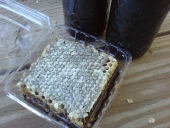posted 5 years ago
I think that's a really cool idea, Pearl. My only reservation would be that it would, to extend the analogy, be like having a spa your bees go to in order to recharge and recover from all that's making them sick outside, basically so they can get healthy enough to go work in that toxicity again.
I think it would be a great idea if it were more of a bee rehab two-parter, whereby the bees stay at the rehab/retreat/spa, maybe for a whole season and overwinter there, and their normal stomping grounds, from which they've been removed, are then remediated over a season, with the fastest nutrient-cycling possible, and an overseeding of desired species to stock the soil seed bank.
Thus, the rejuvenated, rehabilitated bees return from the bee spa to find that their territory has started to resemble the place they went where they got all healthy and happy, and they stay healthy and happy.
And maybe this approach is so successful that it is widely adopted, and so much land is transformed under the bee spa model that they stop being unique in the landscape, because that's just how everyone keeps their marginal or underutilised space.
-CK
A human being should be able to change a diaper, plan an invasion, butcher a hog, conn a ship, design a building, write a sonnet, balance accounts, build a wall, set a bone, comfort the dying, take orders, give orders, cooperate, act alone, solve equations, analyze a new problem, pitch manure, program a computer, cook a tasty meal, fight efficiently, die gallantly. Specialization is for insects.
-Robert A. Heinlein





